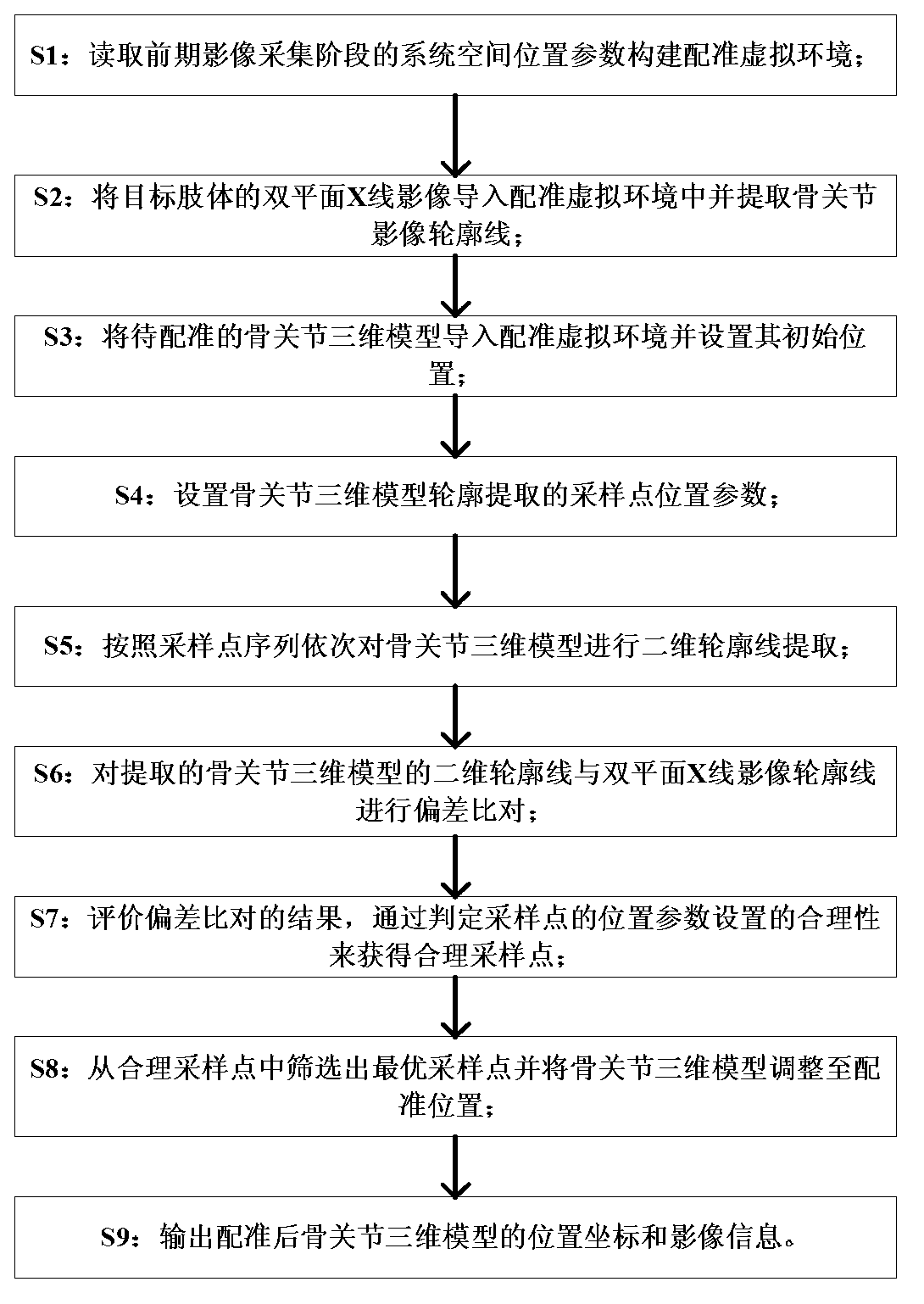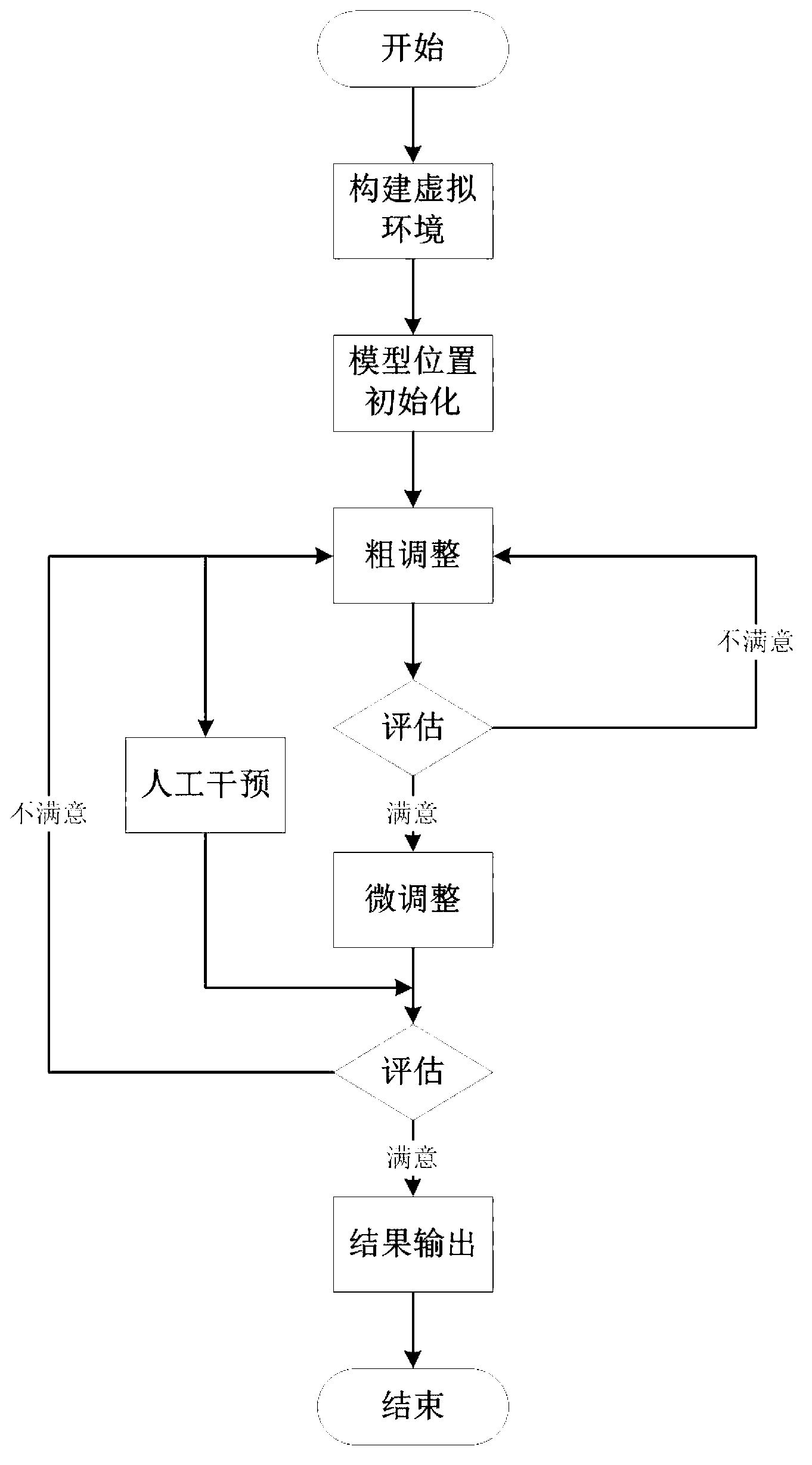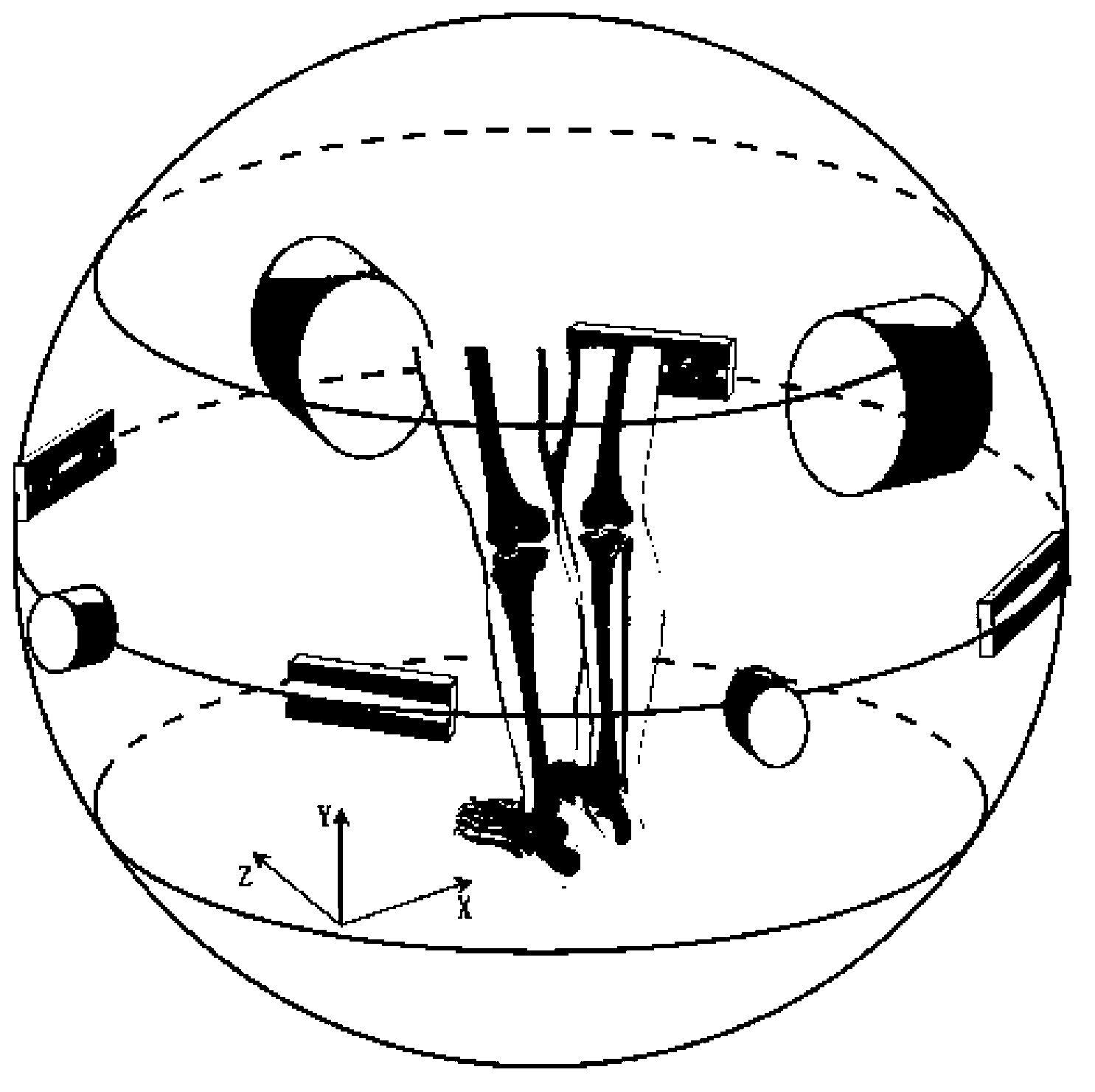Three-dimensional model to two-dimensional image space registering method of human body bone joint system
A three-dimensional model, spatial registration technology, applied in image analysis, image data processing, instruments, etc., can solve the problems of registration accuracy limitation, time-consuming, cumbersome operation, etc., to increase accuracy and reliability, The effect of reducing time cost and improving work efficiency
- Summary
- Abstract
- Description
- Claims
- Application Information
AI Technical Summary
Problems solved by technology
Method used
Image
Examples
Embodiment 1
[0041] figure 1 It is a flow chart of Embodiment 1 of the registration method, as shown in the figure, the three-dimensional model of the human bone joint system-two-dimensional image space registration method provided by the present invention includes the following steps:
[0042] S1: Read the system spatial position parameters in the previous image acquisition stage to construct a registration virtual environment; the registration virtual environment is the same as the real physical environment of biplane X-ray image acquisition, and is established through the following steps:
[0043] S11: Read the position information of the X-ray emitting device and the X-ray receiving device in the dual-plane X-ray image acquisition device, and construct a spatial coordinate system;
[0044] S12: Configure the initial placement point of the virtual camera in the space coordinate system according to the position information of the X-ray emitting device, and configure the initial placement...
Embodiment 2
[0056] figure 2 It is the flow chart of Embodiment 2 of the registration method, image 3 It is a schematic diagram of the integrated acquisition of dual-plane X-ray images and somatosensory motion in the early stage. Figure 4 Schematic diagram of the initial alignment between the virtual environment construction and the bone joint model for registration, Figure 5 Schematic diagram for X-ray image contour extraction, Figure 6 Extract schematics for model contour projection, Figure 7 extract the schematic for the model outline, Figure 8 Schematic extraction for coarse-tuned sampling of model contours, Figure 8 The black dots in represent the distribution state of coarse adjustment sampling points, and the three-dimensional model of the bone joint system is placed in the middle. Figure 9 Schematic extraction for fine-tuning sampling of model contours, Figure 9 The black dots in the figure indicate the distribution state of the fine-tuning sampling points, and the ...
PUM
 Login to View More
Login to View More Abstract
Description
Claims
Application Information
 Login to View More
Login to View More - R&D
- Intellectual Property
- Life Sciences
- Materials
- Tech Scout
- Unparalleled Data Quality
- Higher Quality Content
- 60% Fewer Hallucinations
Browse by: Latest US Patents, China's latest patents, Technical Efficacy Thesaurus, Application Domain, Technology Topic, Popular Technical Reports.
© 2025 PatSnap. All rights reserved.Legal|Privacy policy|Modern Slavery Act Transparency Statement|Sitemap|About US| Contact US: help@patsnap.com



